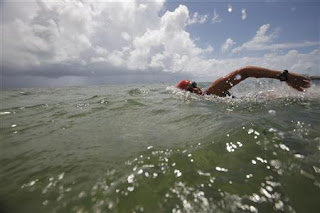What are our daily practice goals? I belive we tend to think in one of three ways depending on the day and/or the time of season:
1. Building Aerobic Capabilities
2. Honing Race Pace (Time and Stroke)
3. Establishing New Habits of Technique
While each of these goals is a necessary component to high level performance, there is one ingredient that must be present for these goals to be reached: Concentration.
Often, simply valuing concentration as a coach can go a long way. Here are a few ways we can "coach" concentration every day:
1. Replace our critique of effort with critique of concentration.
Often, the concentration is what produces effort -- certainly, it's not the other way around.
2. Praise concentration towards a task over the actual result of the task.
A concentration-oriented athlete will reproduce great effort more often than a result-oriented athlete.
3. Help an athlete understand that being a "good concentrater" is the reason for success.
Show (explain) concretely and immediately that concentration to a certain task was the difference between success and failure.
These points are especially tough to follow, because as coaches we tend to get excited about the concrete areas of our practices (times and 'clock improvement', yardage, big fast sets, achievement of a better stroke technique). But the area that affects our performance the most is the athlete's ability to block out distraction and get the most from themselves! If we talk about concentration, and value its power, we will get more concentration from our athletes.























